#Children
Text
Petit Chef Kitchen Toy, Sink and Fridge Functional for The Sims 2

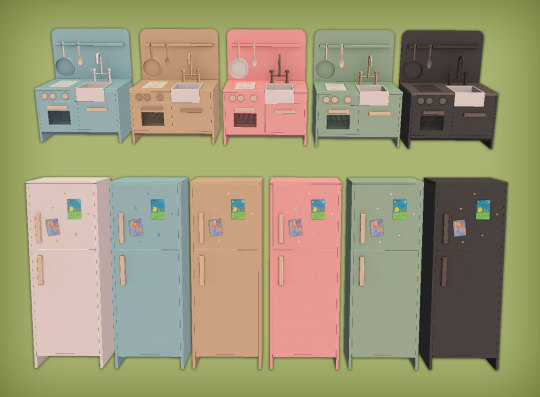
These are 4to2 conversions from Syboulette, low poly.
The kitchen toy is functional and your children sims can prepare 3 different food with it: Cupcake, Cake and Donut (like the original toy, they need to have some cooking skills or the food will be burned).
I added a second version of the kitchen named "NO SINK". This version (that has the same guid, so choose only one) doesn't have the sink so you can put the functional sink on the slot I added for it. The sink has with Rebecah animations (so children won't use the stool) and is just for children (found in the sink section of buy mode), all the actions except for the repair one are just for children.
The fridge is functional and just for children too and is based on THIS fridge by Rebecah. The inside was empty so I added some stuff from this Ravasheen Fridge.
I think that's all, let me know if there are problems ^^
DOWNLOAD HERE
----------------------------------
If you want to support my creations, you can send me a donation with Paypal or Ko-fi ☕ If you want to ask for a Paid Commission, HERE you can find more details. Thank you <3
#the sims 2#ts2#sims 2 cc#sims 2 download#the sims 2 cc#ts2 download#4to2#4to2 conversion#buy mode#functional#children#kitchen toy#mini fridge#kids#kids toys
148 notes
·
View notes
Text
🥰…
90 notes
·
View notes
Text
Hello
Update! The situation in Gaza is very bad, and the child needs to evacute Gaza so he can start his treatment abroad.
I thought you might be interested in supporting this GoFundMe,
Even a small donation could help Owais and Anas reach their fundraising goal. And if you can't make a donation, it would be great if you could share the fundraiser to help spread the word.
Thanks for taking a look!
134 notes
·
View notes
Text

July 20, 1956 — see The Complete Peanuts 1955-1958
#peanuts#comics#humor#existentialism#charlie brown#children#kids#psychology#developmental psychology#childhood#inferiority complex#freud#attachment theory#psychoanalysis#child development
84 notes
·
View notes
Photo

Child Labour in the British Industrial Revolution
Children were widely used as labour in factories, mines, and agriculture during the British Industrial Revolution (1760-1840). Very often working the same 12-hour shifts that adults did, children as young as five years old were paid a pittance to climb under dangerous weaving machines, move coal through narrow mine shafts, and work in agricultural gangs.
It was very often the case that children's jobs were well-defined and specific to them, in other words, child labour was not merely an extra help for the adult workforce. The education of many children was replaced by a working day, a choice often made by parents to supplement a meagre family income. It was not until the 1820s that governments began to pass laws that restricted working hours and business owners were compelled to provide safer working conditions for everyone, men, women, and children. Even then a lack of inspectors meant many abuses still went on, a situation noted and publicised by charities, philanthropists, and authors with a social conscience like Charles Dickens (1812-1870).
A Lack of Education
As sending a child to school involved paying a fee – even the cheapest asked for a penny a day – most parents did not bother. Villages often had a small school, where each pupil's parents paid the teacher, but attendance was sometimes erratic and more often than not the education rudimentary in hopelessly overcrowded classes. There were some free schools run by charities, and churches often offered Sunday school. Not until 1844 were there more free schools available, such as the Ragged schools established by Anthony Ashley-Cooper, 7th Earl of Shaftesbury (1801-1885). These schools concentrated on the basics, what became known as the 3 Rs of Reading, Writing, and Arithmetic. Compulsory education for 5 to 12-year-olds, and the institutions necessary to provide it, would not come along until the 1870s. Consequently, "at least half of nominally school-age children worked full-time during the industrial revolution" (Horn, 57).
Some factory owners were more generous than others to the children in their employ. An example is the Quarry Bank Mill in Styal in the county of Cheshire. Here the owner provided schooling after the long working day was over for 100 of its child workers in a dedicated building, the Apprentice House.
An indicator of better education, despite all the difficulties, is literacy rates, rather imperfectly measured by historians by recording the ability of a person to sign one's name on official documents such as marriage certificates. There was a great improvement in literacy, but by 1800, still only half of the adult population could sign their name to such documents.
For those children who could find work in the Industrial Revolution, and there were employers queueing up to offer it, there were no trade unions to protect them. For the vast majority of children, working life started at an early age – on average at 8 years old – but as nobody really cared about age, this could vary wildly. Working involved at best tedium and at worst an endless round of threats, fines, corporal punishment, and instant dismissal at any protest to such treatment. In one survey taken in 1833, it was found that the tactics used with child labourers were 95% negative. Instant dismissal accounted for 58%. In only 4% of cases was a reward given for good work, and a mere 1% of the strategies used involved a promotion or pay rise.
Continue reading...
78 notes
·
View notes
Text
#children#original character#sonic frontiers#hypnosis#今野杏南#emma roberts#plur#danielle campbell#thanzag#old web#conspiracy#studio ghibli
125 notes
·
View notes
Text
#lactating#kylie jenner#andy biersack#tomarry#proannna#逢沢りな#polina sitnova#bethany mota#st4#Vicki Chase#calligraphy#rise of the teenage mutant ninja turtles#children
124 notes
·
View notes
Text
https://pamela-852.mxtkh.fun/zd/ZpXz1RL
#st4#jess davies#Vicki Chase#calligraphy#rise of the teenage mutant ninja turtles#children#easter#paris fashion week#female bodybuilder#terezi pyrope#love live#news#fashionblogger
126 notes
·
View notes
Text
And then the hug... 🥰 Follow me for more Goldies who make the best playmates!
#funny#cute#pets#animals#humor#comedy#dogs#jokes#lol#positivity#memes#love#meme#haha#hilarious#life#omg#adorable#family#dogs of tumblr#wholesome#doggo#cute animals#dog#aww#babies#kids#children#parenting
38 notes
·
View notes
Text

Aircraft modelers. Photo by Emmanuil Yevzerikhin (Moscow, 1930s).
53 notes
·
View notes
Text
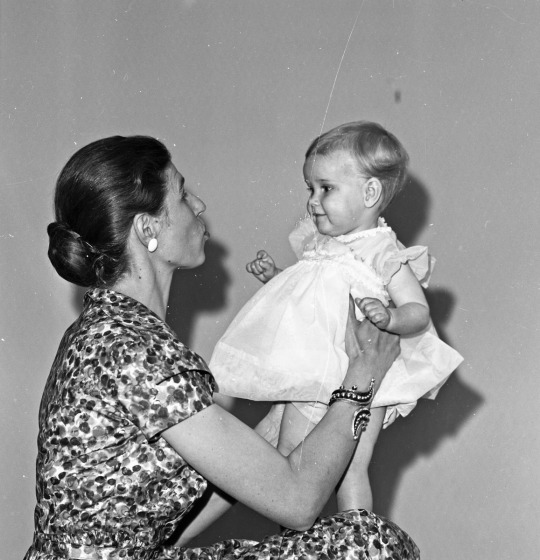
"Mrs Eriksson with her daughter", 1950s, Sweden.
39 notes
·
View notes
Text
Why does everyone keep talking in that high-pitched voice whenever they see me? I’m not deaf!
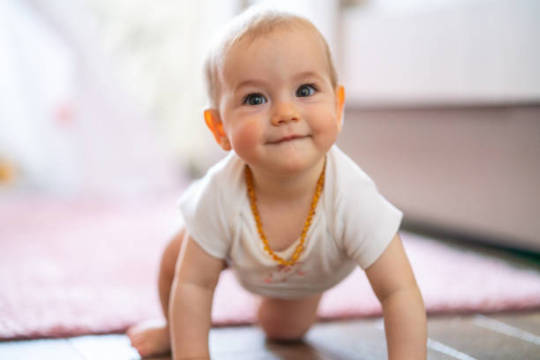
Dear Wallaby,
I hope this letter finds you well. My name is Bobby, and I am a resident of the crib in the corner of the living room. I am writing to you today to bring to light an issue that has been plaguing my existence for the past few months.
You see, Wallaby, I am surrounded by giants. Giants who, for some inexplicable reason, believe that the only way to communicate with me is through a series of high-pitched coos and squeals. It’s as if they’ve forgotten the art of normal conversation and have resorted to mimicking the sounds of a distressed seagull. No joke.
Every day, I am subjected to a symphony of squeaky voices that would put even the most patient of souls to the test. “Who’s a cute little baby?” they ask, their voices reaching pitches that I’m sure only dogs can hear. “Goo goo gaga,” they continue, seemingly oblivious to the fact that I have no idea what that means.
I’ve tried to communicate my displeasure, Wallaby. I’ve frowned, I’ve cried, I’ve even thrown my rattle in protest. But alas, my efforts have been in vain. They simply chuckle, pat my head, and continue their high-pitched tirade.
I understand that they mean well, Wallaby. They believe that these squeaky voices are comforting, that they somehow bridge the gap between our worlds. But let me assure you, they do not. If anything, they only serve to widen the chasm.
I long for the day when I can have a normal conversation. When I can discuss the complexities of the mobile hanging above my crib or debate the merits of pureed peas versus carrots. But until that day comes, I remain at the mercy of the squeaky voices.
So, I implore you, Wallaby, to use your platform to bring about change. Let the giants know that we, the residents of the cribs, are more than just cute faces. We are thinkers, dreamers, and, given the chance, great conversationalists.
Thank you for your time, Wallaby. I look forward to a future where the squeaky voices are a thing of the past.
Yours sincerely, Bobby.
#kids#momlife#children#kindergarten#toddlers#babies#too cute#precious#awww#adorable#parents#parenting#child development#growing up#fathers#funny#funny stuff#funny post#humor#lol#memes#haha#jokes
25 notes
·
View notes
Text
This is such an authentic portrayal of how a 12-year-old would act

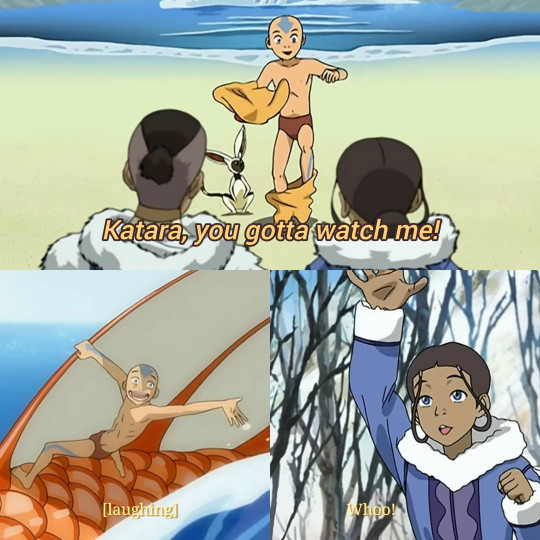
These scenes of Katara and Aang remind me a lot of me and my young brother (*who's also 12 year old btw) when he becomes open and vulnerable with me and wants me to watch him when he's playing a game or doing smth fun, kids want acknowledgement, attention and praise,
And they become disappointed when you're not giving attention and want to make sure you're watching them
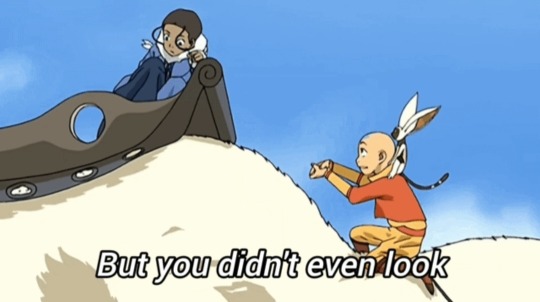
(In these moments I would be busy just like Katara in this scene)
Then I realise that he's disappointed and wants acknowledgement, I reply with a complement in a tone like I'm amazed to make him feel noticed
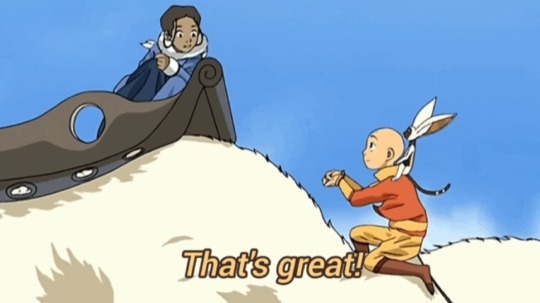
+ bonus
(*This me when I ask my brother to do smth lol)

#atla#katara#aang#avatar the last airbender#atla confessions#analysis post#atla scenes#atla book 1#cartoon#children
31 notes
·
View notes
Text
phoebe bridgers and julien baker sing “everything is free” by gillian welch 7/8/2018
#CHILDREN#‘‘oh tight!’’ i cant w julien’s gay little voice#phoebe bridgers#julien baker#pb&j#winnipeg folk festival#2018#july 2018#video#archival
20 notes
·
View notes
Text

Willem de Kooning,
"Screams of Children Come from Seagulls (Untitled XX)," 1975,
Oil on canvas, 77 x 88 inches.
Glenstone Museum, Potomac, Maryland,
© 2024 The Willem de Kooning Foundation, SIAE
20 notes
·
View notes
Note
What if MC behaves with their children the same way Alf treated them? MC loves his children and will protect them and won't let anyone say a bad word about them, but they are cold and distant. What will be the reaction of the RO?
Even after all the damage the MC went through as a child, you'd still want an MC like Ahlf 😔🥲
Irus: He doesn't know what a good parent is supposed to look like but he knows for certain it isn't how the MC is acting. He'd try to talk to the MC to tell them that they need to be more present with their child.
Elora: She definitely knows how painful it can be to have a distant parent and will give the MC a good talking-to so that they can remedy their issues before it's too late.
Oren: He's happy enough to give his and the MC's child extra love and attention but will have a heart-to-heart with the MC about their actions/behaviour when they're alone.
Anu: She wouldn't notice anything wrong with the MC's distance unless it started to negatively affect their child but if it didn't, there's no problem here.
28 notes
·
View notes